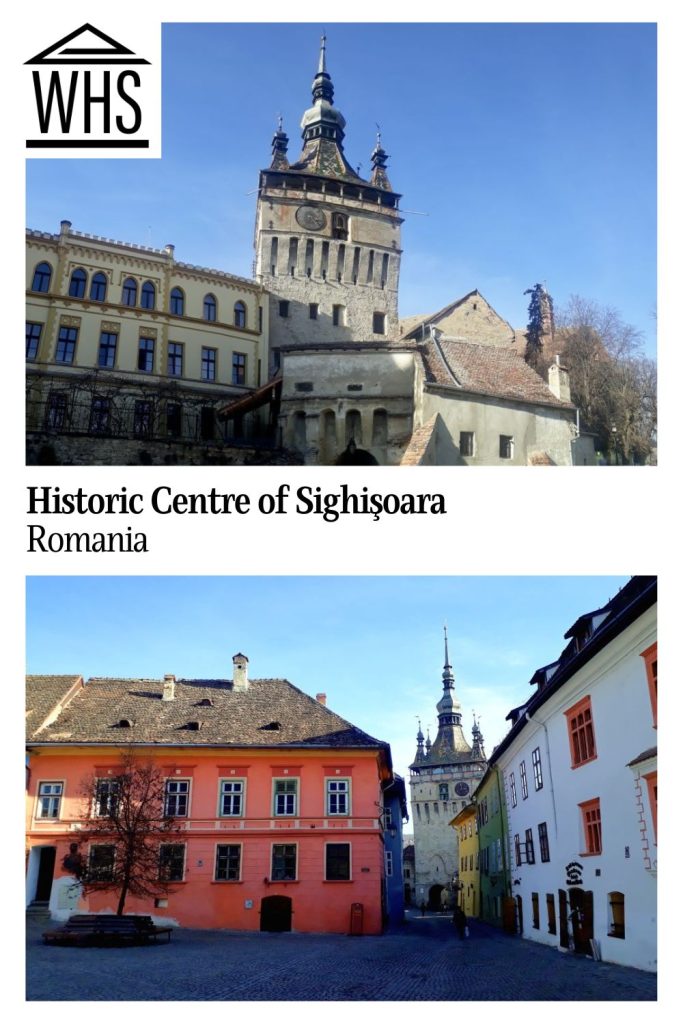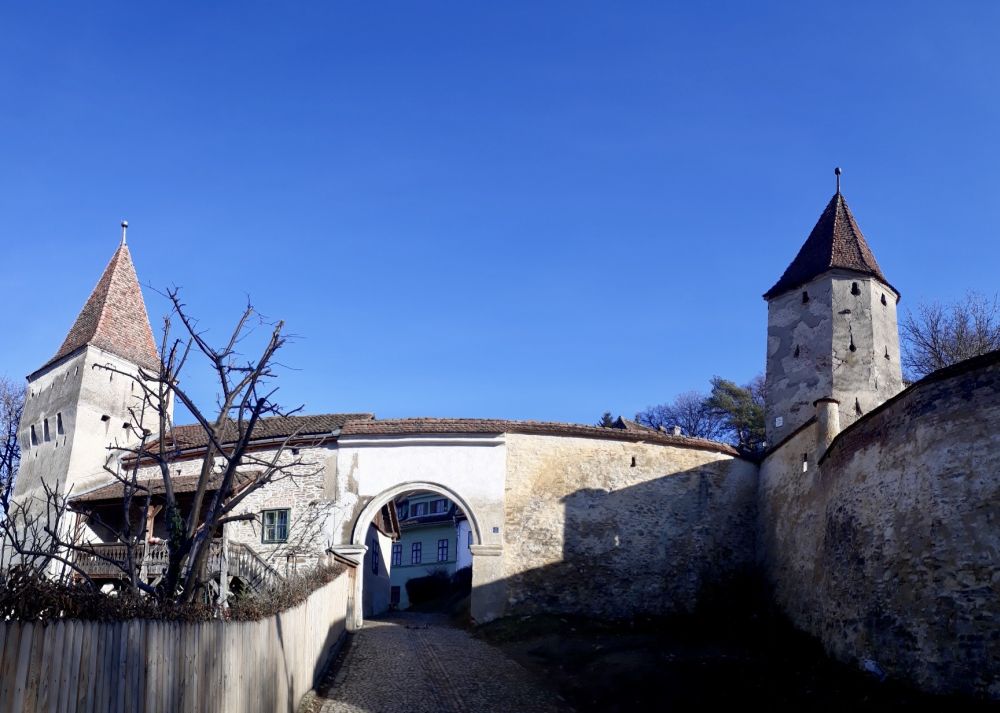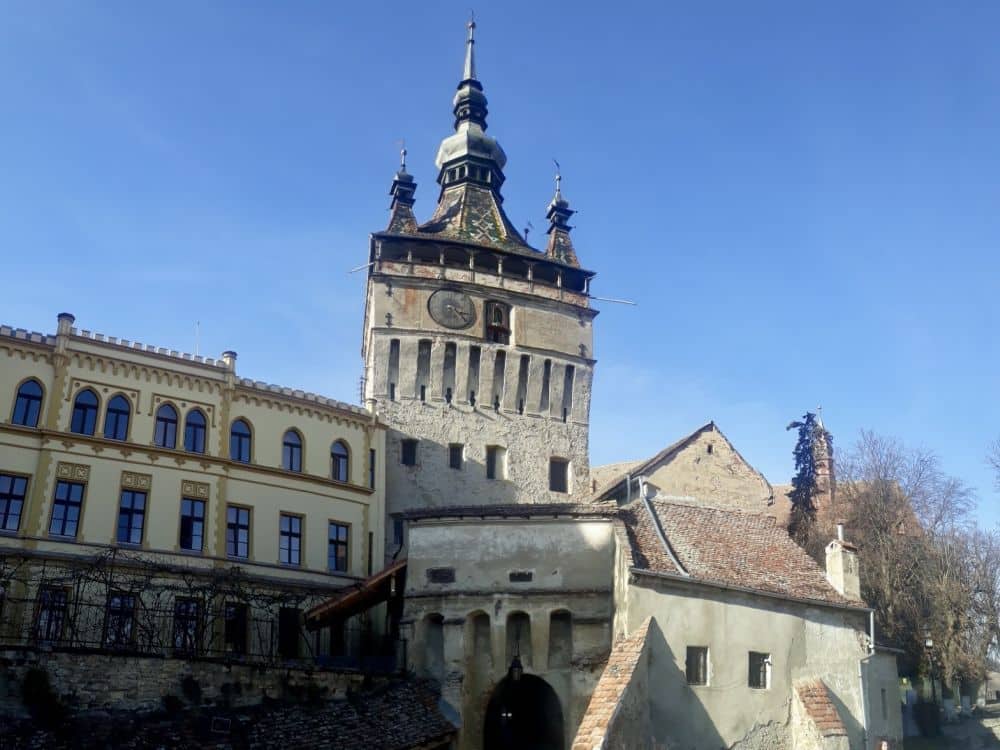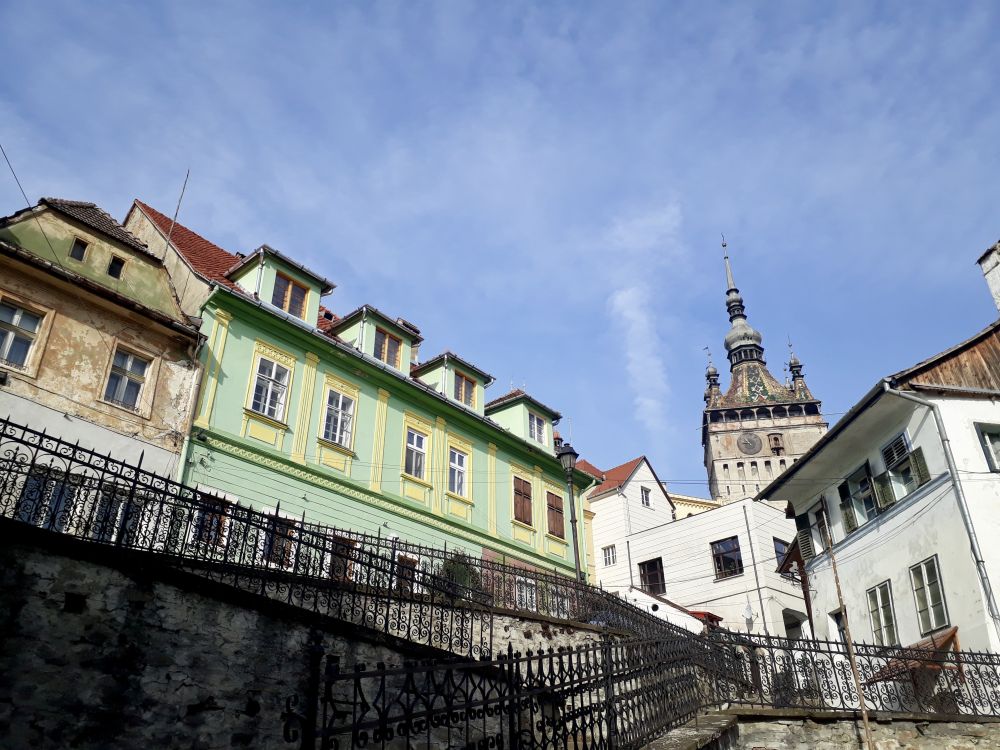Historic Centre of Sighişoara
By Juan
What is the Historic Centre of Sighişoara?
Sighişoara is a city located in the Romanian region of Transylvania and its historical centre has been a UNESCO World Heritage site since 1999. Many of the buildings in the historical centre, or citadel, date from the 12th century and are really well preserved.

Sighişoara was founded by German craftsmen and merchants and it’s a beautiful example of a fortified medieval town. Today you can still see many original buildings, the fortified wall and nine defensive towers. Each of the nine towers was built, maintained and defended by a craft guild. This is why they have names like the butcher tower, boot maker’s, tailor’s, rope maker’s, etc.
For me, the most striking of them all is the 14th-century Clock Tower which controlled the main gate and stored the city’s treasure.
Disclosure: This article contains affiliate links. Making a purchase through an affiliate link will mean a small commission for this website. This will not affect your price. Privacy policy.
Why is the Historic Centre of Sighişoara a UNESCO World Heritage site?
The Transylvanian Saxons moved to Transylvania from southern Germany and the Low Countries beginning in the 12th century, when the Kingdom of Hungary ruled the region. They went there to defend the eastern border and to spread culture from Central Europe.
This makes Sighisoara’s geographic location significant: “between the Latin-oriented culture of central Europe and the Byzantine-Orthodox culture of south-eastern Europe,” according to UNESCO.

UNESCO’s listing says that Sighişoara is testimony to the culture of the Transylvanian Saxons: “a culture that is coming to a close after 850 years and will continue to exist only through its architectural and urban monuments.” Transylvanian Saxons have been moving away from the region since World War II, mostly to Austria and Germany. Only a few thousand remain.
What can you expect on a visit to Sighişoara?
When you visit Sighisoara, you can expect a typical walkable European old town which is a delight to wander around.
Besides being a UNESCO World Heritage Site, Sighisoara is also famous as the birthplace of Vlad “The Impaler,” who inspired the fictional character of Count Dracula in Bram Stoker’s 1897 Gothic horror novel Dracula.
You can either take a guided tour or wander the citadel on your own as there are many informational boards explaining the history of the old town. I particularly enjoyed reading about the origins of each of the nine towers along the fortified wall. The “Church on the Hill” is worth visiting too, with its 14th-16th century frescos.

Is the Sighisoara worth visiting?
Definitely! I included Sighişoara as one of the best places to visit in Romania after I travelled around the country for a couple of months.
No visit to Transylvania would be complete without going to Sighisoara. As it’s almost in the middle of other famous locations such as Brasov, Cluj-Napoca and Sibiu, it makes even more sense to make a stop here, whether as a day visit or to stay overnight.
The citadel is pretty walkable and is not huge. I recommend that you stay 1 or 2 days to be able to explore the old town.

What sorts of travelers would like the Historic Centre of Sighişoara?
Sighisoara is also the oldest citadel still inhabited in Europe, so if you like visiting medieval towns, this is a really fine example. Combining it with the “mysticism” of being the birthplace of Vlad “The Impaler” adds another layer of interest as you can visit the house where he was born.
The old town is really walkable but still small so it’s a good destination for all sorts of travellers, from families with kids to couples and solo backpackers. Some of the streets and attractions may not be too accessible for people with reduced mobility but there are lots of accessible areas around town to get a good sense of the place.
As a backpacker, I loved this place as it combines history with beautiful architecture. I consider this a place that almost anyone will enjoy visiting.

Tips for visiting Sighisoara
This is a walking destination, even if it’s not particularly huge in its geography, so it’s important to go with comfy walking shoes.
Depending on the time of the year, you will need either layers for the cold or a bottle of water to stay hydrated. Romania can be very cold in the winter and very hot in the summer.
You will find plenty of places to stay in Sighisoara as well as restaurants and cute cafes in the citadel. It has all the ingredients for a perfect weekend getaway or to relax for a few days if you prefer slow travelling.
Use the map below to find accommodations in the Historic Centre of Sighisoara:
The city holds a medieval festival at the end of July each year. Sighisoara is a perfect backdrop for a medieval fair, but of course it’ll also be more crowded then.
If you are road-tripping through Romania – find a rental car here – several of the fortified churches in the UNESCO-listed collection, Villages with Fortified Churches, are quite nearby. Romania has several interesting church collections in its UNESCO list.
Where is the Historic Centre of Sighişoara?
Sighisoara haș a really central location in the Romanian map. It’s well connected with trains and buses, both of which are fairly inexpensive compared to other European countries.
Whilst it’s a bit of a longer journey from Bucharest, Sighisoara is easily reachable from all the other major locations in Transylvania. Here are some approximate journey times from other places that may be in your Romanian itinerary. Distance to Sighișoara from:
- Bucharest: 4.5h driving or 6h by direct train.
- Brasov: 2h driving or 3.5h by direct train.
- Sibiu: 2h driving or 2h by direct train.
- Cluj-Napoca: 2.5h driving or 3.5h by direct train
If you’re driving, there are several parking areas outside of the old citadel.
For more information about the Historic Centre of Sighişoara, its opening hours and admission fees, see this website.
Have you been to Sighisoara? If so, do you have any additional information or advice about this UNESCO World Heritage site? Please add your comments below!

